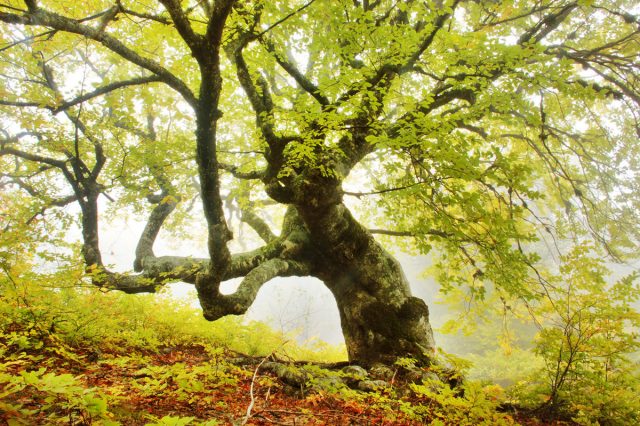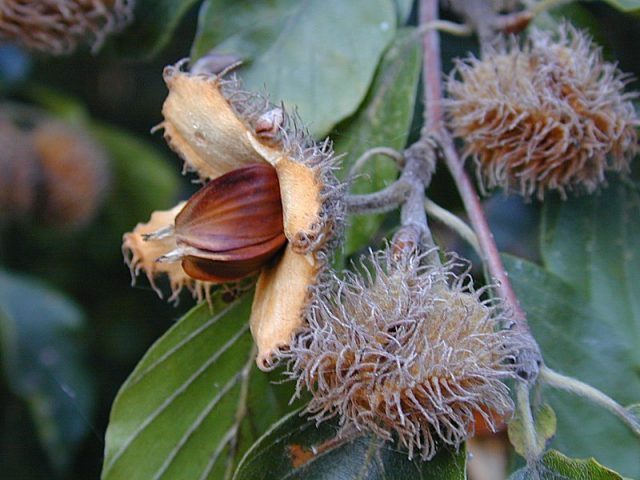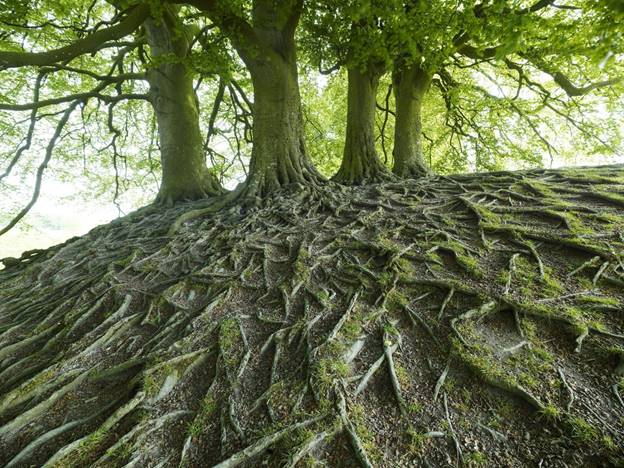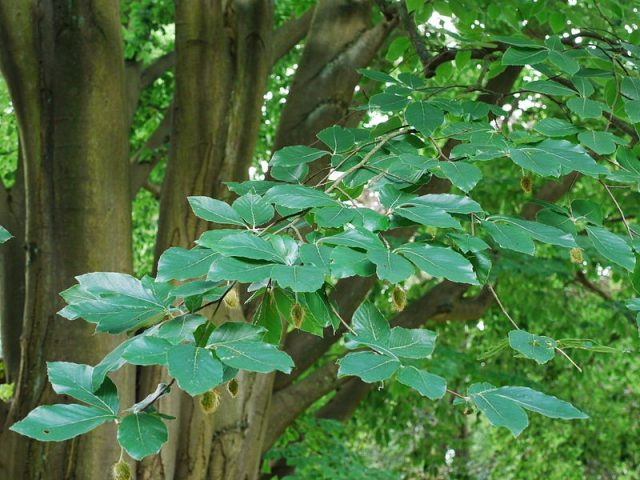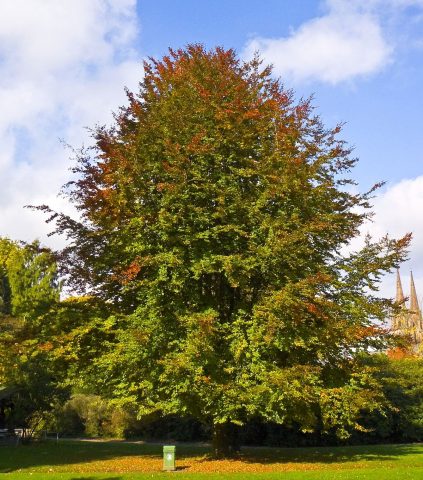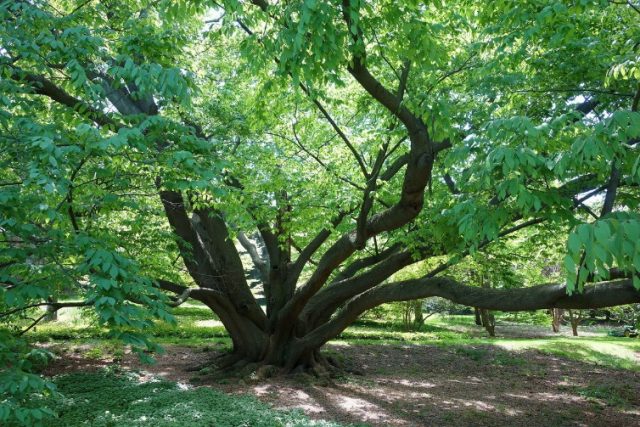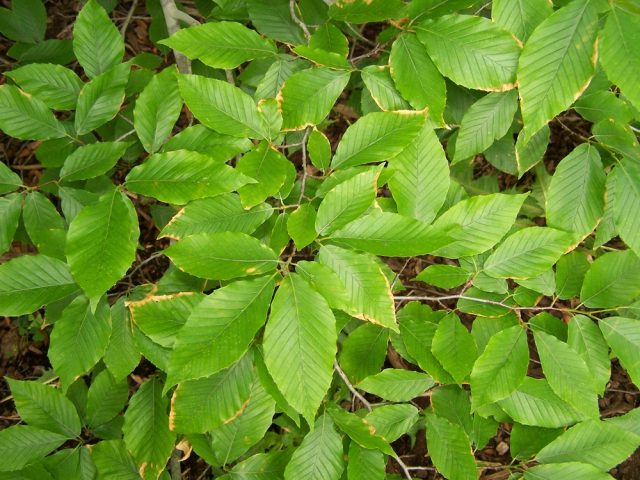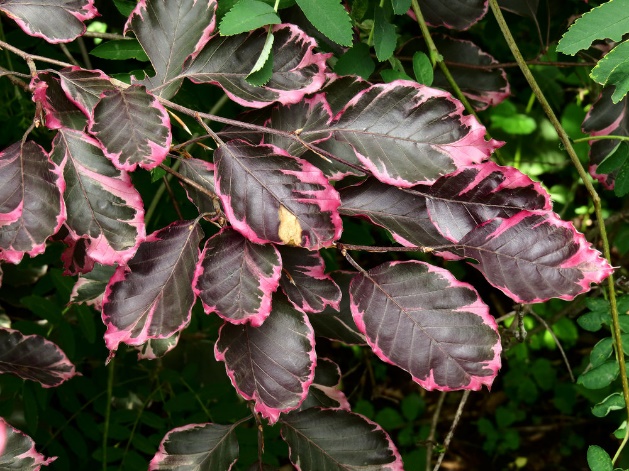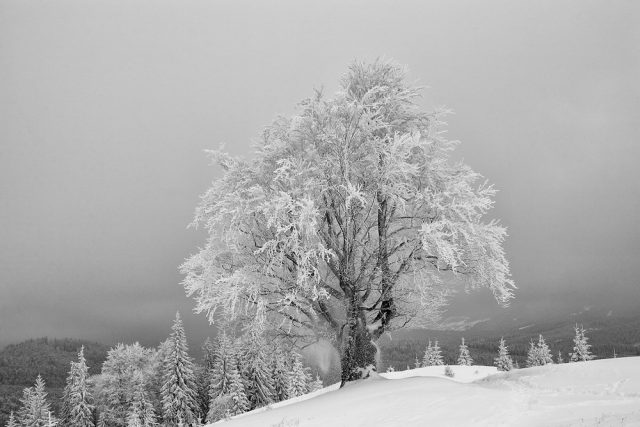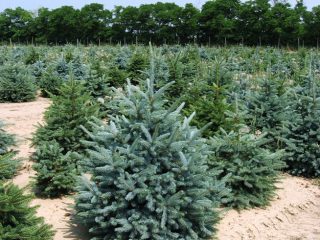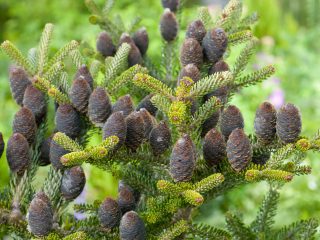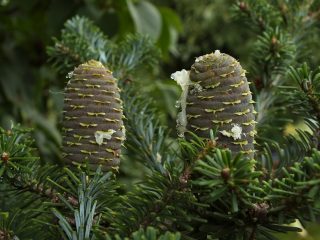Content
The beech tree is considered a valuable species all over the world. In modern Europe, it is often planted for landscaping areas of city parks. In the wild, you can meet clean beech forests. Beech grows even in the mountains, the growing area of this tree is limited to an altitude of 2300 m above sea level.
Beech - what is this tree
Beech is a broad-leaved, tall, deciduous, slow-growing tree belonging to the Beech family. In many languages the name of the beech tree is similar to the word "book". This is due to the fact that bark and wooden sticks carved from beech were used in ancient times to write the first runes.
What a beech tree looks like
The height of the beech tree reaches 30 m, the trunk girth is approximately 2 m in diameter. The trunk is covered with a thin layer of smooth gray bark. The crown of beech has unusual properties, it is so thick that sunlight simply does not reach the lower branches, as a result of which the processes of photosynthesis are disrupted, the branches die off and fall off. That is why they are located only in the upper part of the crown; almost to the very top of the tree, the trunk remains bare.
The beech tree is a cozy home for birds. It looks mesmerizing at any time of the year. In autumn, the beech forest is replete with juicy, bright colors, and in summer and spring it pleases the eye with lush green foliage.
Botanical description of the beech tree
Vigorous branches of beech are covered with oval or oval-oblong leaves, the length of which ranges from 5 to 15 cm, width - from 4 to 10 cm. They can be slightly serrated or whole-edged. In the autumn-winter period, the beech sheds its foliage.
Scaly buds are elongated and bloom on shoots to replace leaves in winter. The tree begins to bloom in the spring months when the first leaves begin to open. Flowers collected in catkins are unisexual and pollinated by the wind.
The triangular beech fruit is acorn-shaped. Their length is 10 - 15 mm. The fruits have a dense, woody rind, collected in 2 - 4 pieces in a shell consisting of 4 lobes, which is called a plyusa. The fruits are considered edible, despite the high content of tannin, which has a bitter taste. They are popularly called "beech nuts".
Solitary trees begin to bear fruit after 20 - 40 years. Fruiting of beeches growing in groups begins at least 60 years later.
Beech roots are strong and close to the soil surface, there is no pronounced taproot. Often, the roots of several neighboring trees are intertwined.
Where the beech tree grows in Russia
Beech is considered one of the most widespread tree crops in Europe. The mixed and deciduous forests of Europe, North America and Asia are literally covered with beech trees.
In Russia, you can find forest and oriental beech, they grow on the territory of the Crimea and the Caucasus. It will not be easy to grow this tree in central Russia. Without damage, it can only withstand short-term frosts up to -35 oC even at rest.The plant does not tolerate prolonged frosts. Even cold snaps up to -2 are destructive for young shoots, leaves and seedlings. oC.
Beech in landscape design
In landscape design, beech is used for landscaping city parks and alleys. Curly hedges are often formed from it. Trees are planted both singly and in groups, thus creating an unusually beautiful green landscape of parks and forest parks.
The lush crown of beech forms a pleasant partial shade underneath, in which you can place a summer cottage or bench to enjoy the light coolness on hot summer days.
Due to its dense foliage and dense crown, the beech is perfect for planting in industrial areas of the city. The benefit of beech is that the tree purifies water and air around it, protects the soil from erosion. Its roots are capable of releasing mineral and organic substances into the soil, which make it more fertile.
Sowing chestnut, oriental and common spruce, Weymouth pine, oak, birch, white fir, berry yew, juniper, mountain ash, hornbeam get along well with this plant.
Types and varieties of beech
The most common in the wild and in horticulture are the following types of beech:
- Oriental beech (Caucasian). It is found in the vast territories of the Crimea, the Caucasus and the north of Asia Minor. It is often grown in protected natural complexes of the European part of Russia. Grows in beech forests or in the vicinity of other broadleaf crops. The height of the tree can reach 50 m. It is distinguished from the forest beech by a more rounded and even crown and larger elongated leaves reaching 20 cm in length. Oriental beech is also more thermophilic;
- European beech (forest). It is the most common member of this family. It grows wild in Western Ukraine, Belarus and Western Europe. In Russia, it is also present in some reserves in the European part. The height of the forest beech reaches 30 m, its crown is powerful, has an ovoid shape. On the branches there are oval leaves up to 10 cm long;
- Engler. It is considered a rare breed; in the wild, this type of beech grows only in China. Cultivated specimens are used in park and garden landscaping in other countries. The Engler beech tree reaches 20 m in height, its trunk is divided into several branches, thereby forming a broad-oval crown. The plant is also distinguished from other species by the elongated-oval shape of the leaves;
- Large-leaved beech. Most common in eastern North America and Western Europe. Prefers mixed deciduous forests, gets along well with maples, birches and lindens. The main feature of the species is large, elongated leaf plates and buds, stretching up to 2.5 cm in length.
Currently, there are even beech varieties with leaves painted in unusual shades, such as the European beech Tricolor.
Planting and caring for a beech
You can also grow beech in your summer cottage. This is a very shade-tolerant culture that can withstand even prolonged exposure to the shade. However, the plant also feels comfortable in the sun. The beech tree does not tolerate drought and needs abundant watering. It is not demanding on the soil; wet and dry, slightly acidic and alkaline - at least somewhat fertile lands are suitable for it. Planting usually begins in the spring.
Seedling and planting plot preparation
Despite the fact that beech can grow on almost any soil, it prefers loamy, limed soil more. Contaminated and saline soil has a negative impact on beech. It is better to buy beech seedlings in specialized stores, but you can also germinate them yourself from seeds.
How to plant a beech
The main thing when planting beech is to choose the right time, the seedlings are planted in the spring before the first buds appear. Otherwise, the tree will be weakly immune to disease and grow slowly.
Landing Algorithm:
- Dig a hole measuring 80 x 80 cm. The large size of the hole will help the roots grow faster.
- Drain the beech planting pit with stones.
- Add fertilizers that stimulate active growth of the root system.
- Place the beech seedling in the planting hole.
- Sprinkle with earth and water thoroughly.
- For better soil conservation, the area around the trunk of a young beech must be mulched with dry grass.
Watering and feeding
Young beeches should be watered once a week. They also need a spraying twice a month, which removes all dust and pests from parts of the plant.
Top dressing after planting is carried out only as long as the beech tree is small. Plants are fed twice a year: in autumn and spring.
Mulching and loosening
Twice a month after spraying, the soil around the young beech seedlings should also be loosened. After loosening, the trunk circle is mulched with a layer of dry grass, which allows you to keep the soil moist for a long time.
Pruning
The crown of beech lends itself well to cutting and shaping. That is why the tree is so highly valued and is often used in landscape design to form green hedges and various compositions with other plants.
Regular pruning can also help rejuvenate the plant. However, beech branches and leaves grow very slowly, so you rarely need to prune the tree. Usually, annual pruning is done in the spring.
In addition to the decorative function, pruning allows you to free the plant from old and unnecessary branches. The need for such procedures disappears only when the tree becomes an adult.
Preparing for winter
To survive the autumn and winter period, a beech tree needs a lot of moisture. Adult plants are not afraid of short-term cold snaps down to -35 oC. However, young seedlings are not adapted for such temperatures. For the winter, they need a thick layer of mulch and extra cover.
Beech propagation
Propagate a beech tree using:
- seeds;
- cuttings;
- vaccinations;
- taps.
Experienced gardeners recommend seed propagation of beech. Seeds for planting can be harvested by yourself. For this, the fruits, as they ripen, must be collected and stored until planting in semi-moist sand. Immediately before planting, they are placed in a weak solution of potassium permanganate, after which they are planted at home in containers for seedlings. Only with the arrival of warm, sunny days, the seedlings can be transplanted into the ground.
Other breeding methods are grafting, grafting and grafting. However, the rooting rate of plants in this case is reduced to 12%. For three years after planting, the tree will grow very slowly, subsequently the growth rate will accelerate significantly. Good growth is obtained from the stump.
Diseases and pests
The beech tree can be affected by a number of parasitic fungi that are extremely dangerous to the health and life of the plant. They cause diseases such as stem cancer, brown spot, and various types of rot.
Trunk cancer | Its causative agent is a marsupial mushroom. The disease can be detected by the presence of cancerous ulcers on the trunk. The mycelium of the fungus contributes to the death and damage of tree cells. Cancer ulcers increase in size every year, they can even provoke the death of a tree. Small wounds should be trimmed and coated with creosote mixed with oil.The abandoned trees are subject to felling and destruction. |
Brown leaf spot | Fungal disease, which is detected by the presence of brown spots on the leaves. It usually only threatens young trees. When spotted, trees are sprayed with special solutions (Bordeaux liquid, Horus, Barrier) |
White marble rot | It is caused by the tinder fungus, its mycelium penetrates the wood, destroying it and forming rot. If tinder fungus is not removed in a timely manner, the tree may die. |
Conclusion
A beech tree can fit into the landscape design of any suburban area. It will become an indispensable part of garden compositions and will create a light partial shade underneath, in which it is so pleasant to be on hot summer days. Despite the fact that the plant can withstand strong drops in temperature, it is extremely unstable to prolonged frosts. Planting beech is recommended in regions with warm winter climates.
